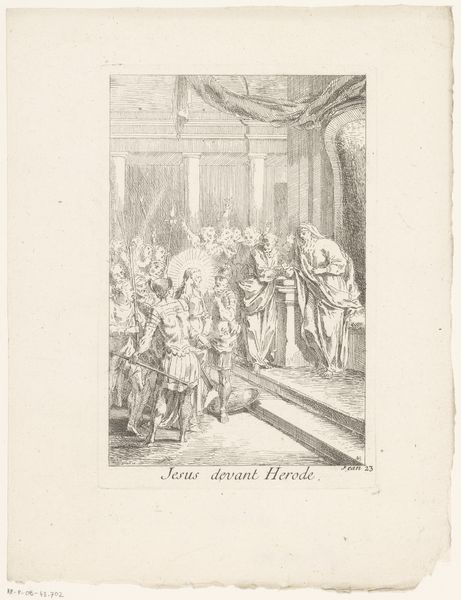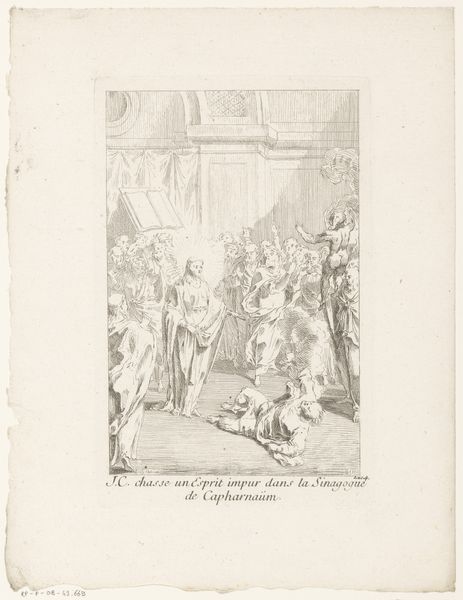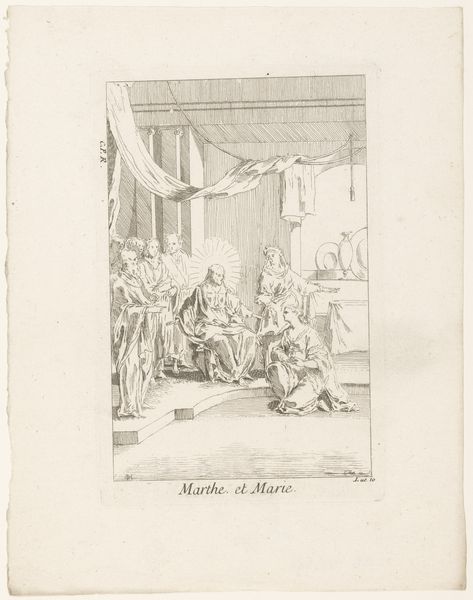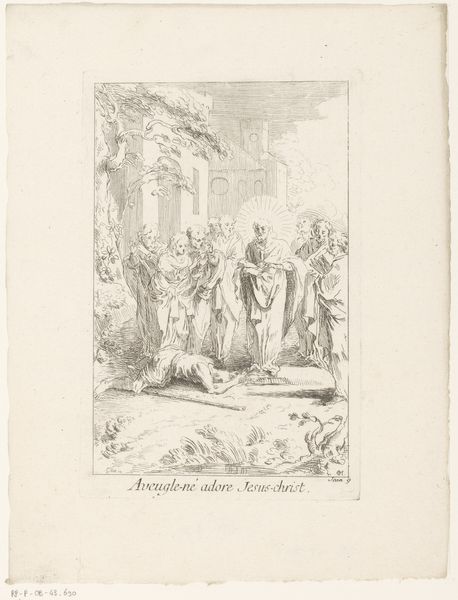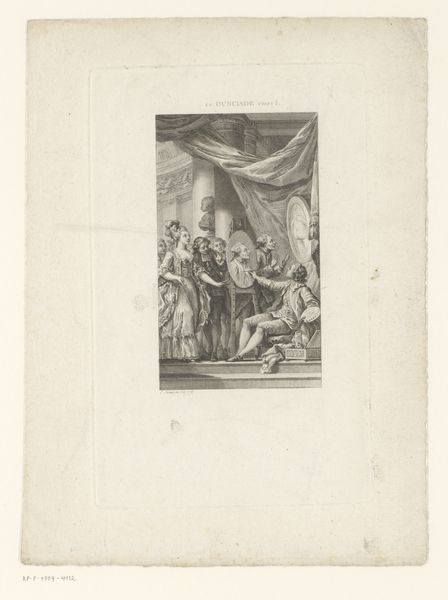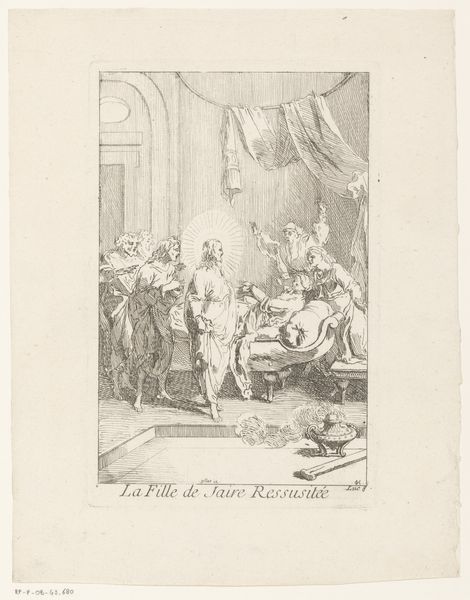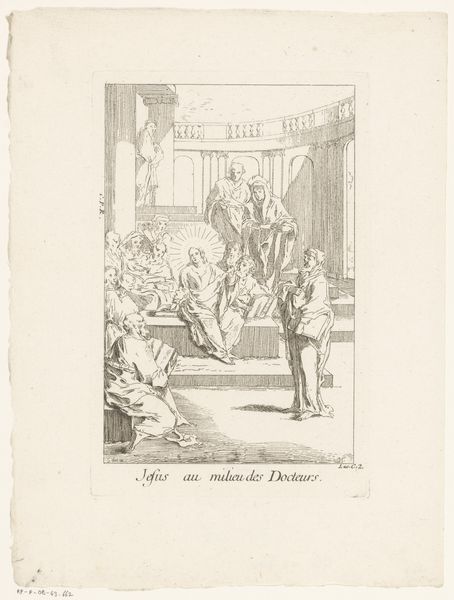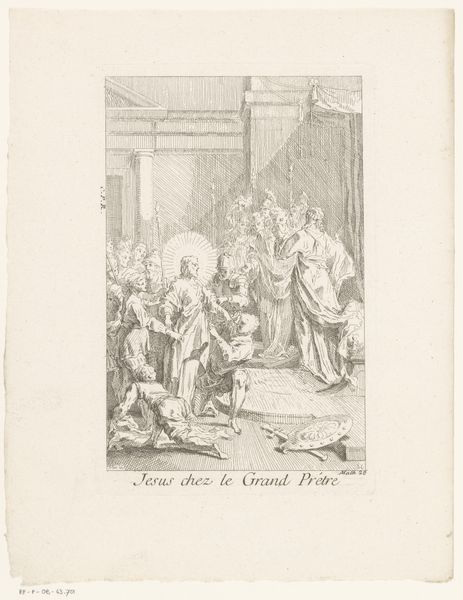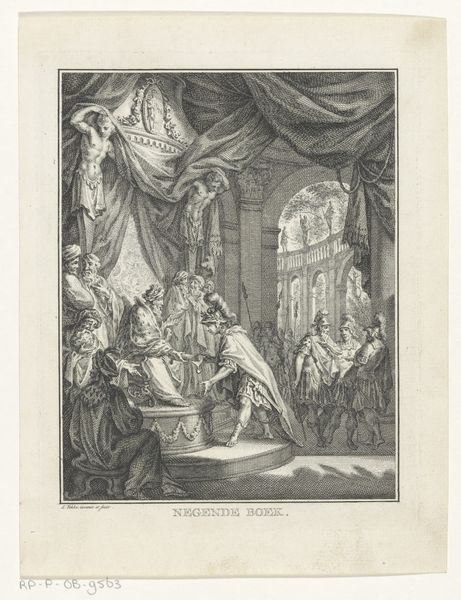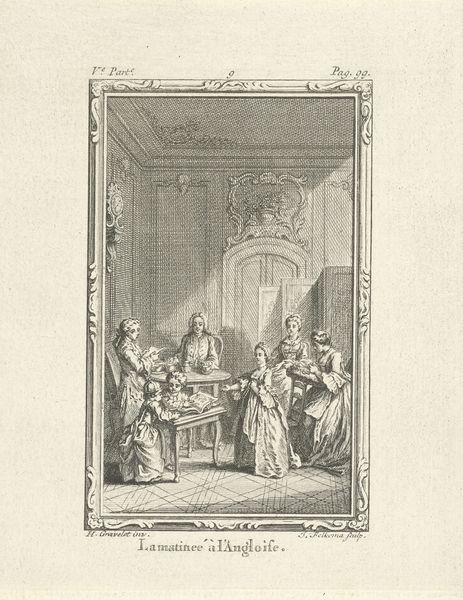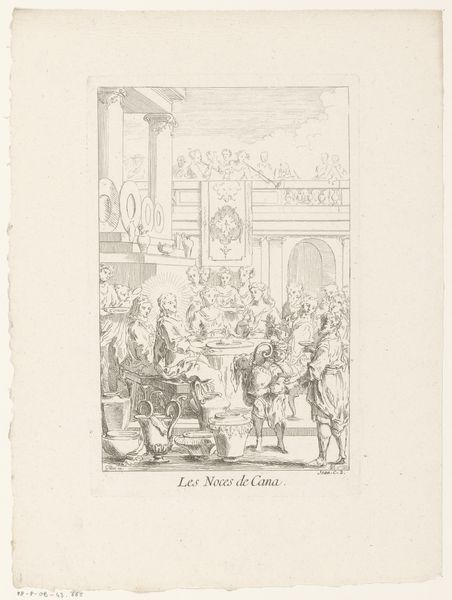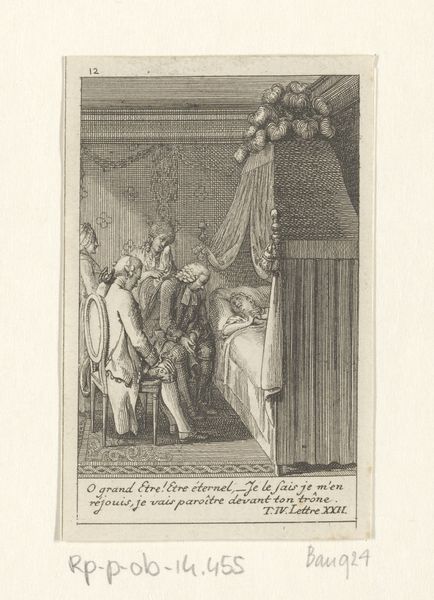
print, engraving
#
light pencil work
#
baroque
# print
#
old engraving style
#
personal sketchbook
#
sketchwork
#
ink drawing experimentation
#
pen-ink sketch
#
line
#
pen work
#
sketchbook drawing
#
history-painting
#
storyboard and sketchbook work
#
sketchbook art
#
engraving
Dimensions: height 198 mm, width 128 mm
Copyright: Rijks Museum: Open Domain
Editor: Here we have "Johannes de Doper voor Herodes," or John the Baptist before Herod, an engraving from before 1732 by Gabriel Huquier, currently held at the Rijksmuseum. The delicacy of the lines is really striking, especially considering the dramatic subject matter. What's your take on this scene? Curator: It's fascinating how Huquier, through this print, engages with a much broader history of representing power and dissent. Consider how artists of the time, often dependent on patronage, navigated depicting challenging subjects like this one. Who is being centered here, really? Editor: That's a great question. It feels like Herod's court is the main focus. Curator: Indeed. And that choice itself carries weight. Baroque art often served to glorify the ruling elite, and the very act of depicting this biblical scene within such a stylistic framework inherently alters its political resonance. Do you notice anything about the setting itself? Editor: It’s staged almost like a theatrical production, the draped fabric, the raised platform…it emphasizes the spectacle of the event. Curator: Precisely. And think about the implications: is Huquier subtly critiquing the spectacle of power, or reinforcing it by immortalizing it in print for public consumption? The very act of dissemination is powerful, isn’t it? Editor: I never thought about it that way. Seeing it as not just a religious scene, but a commentary on the politics of the time, makes me rethink its entire purpose. Curator: Absolutely. Prints like these played a vital role in shaping public perception, allowing narratives and ideologies to spread widely. And remember, what we see here is the product of many forces, from the artist's hand to the demands of the art market itself. Editor: This really shifts how I view art from this era. I will definitely look more closely at how social and political issues were integrated into the work, not just the artist's style and technique.
Comments
No comments
Be the first to comment and join the conversation on the ultimate creative platform.
